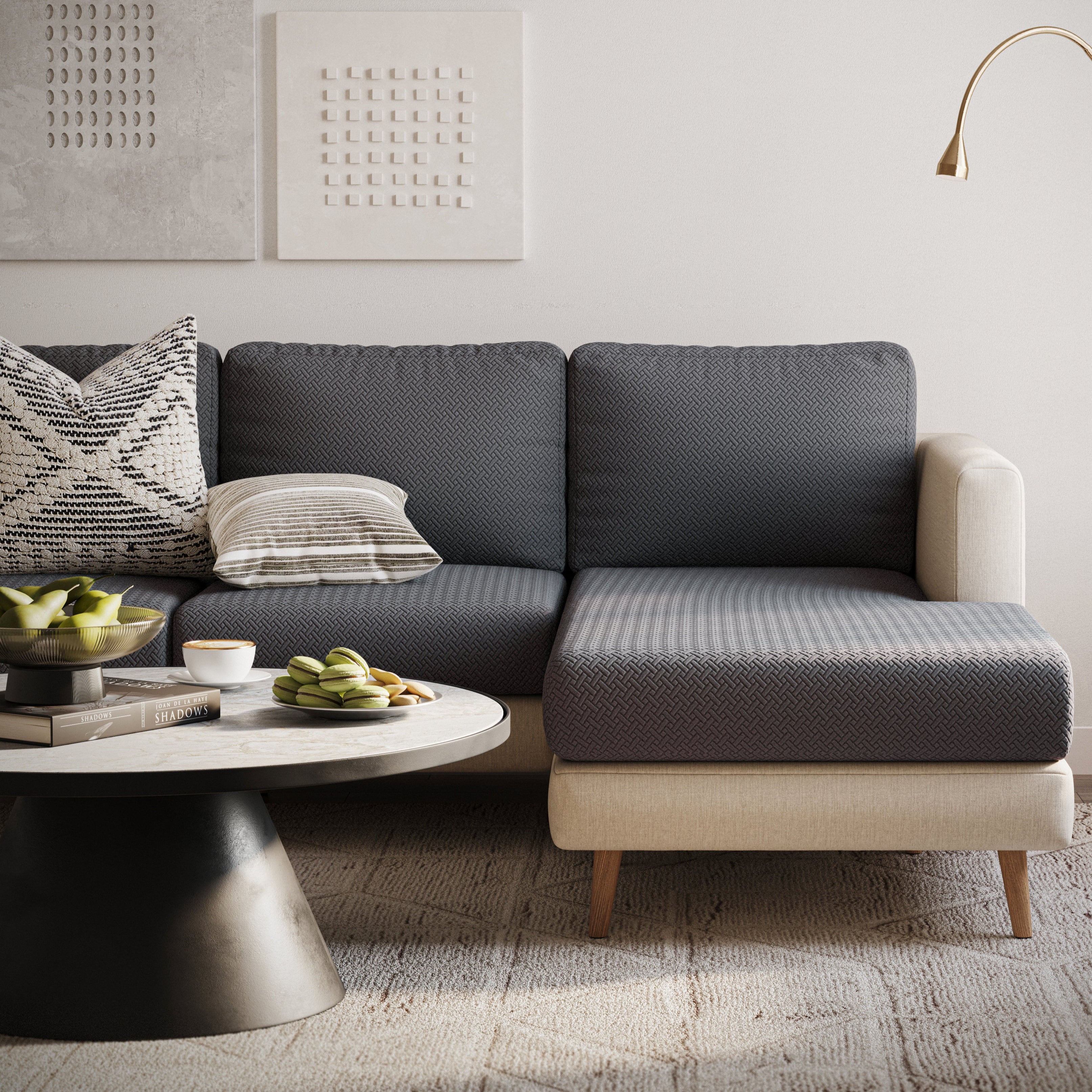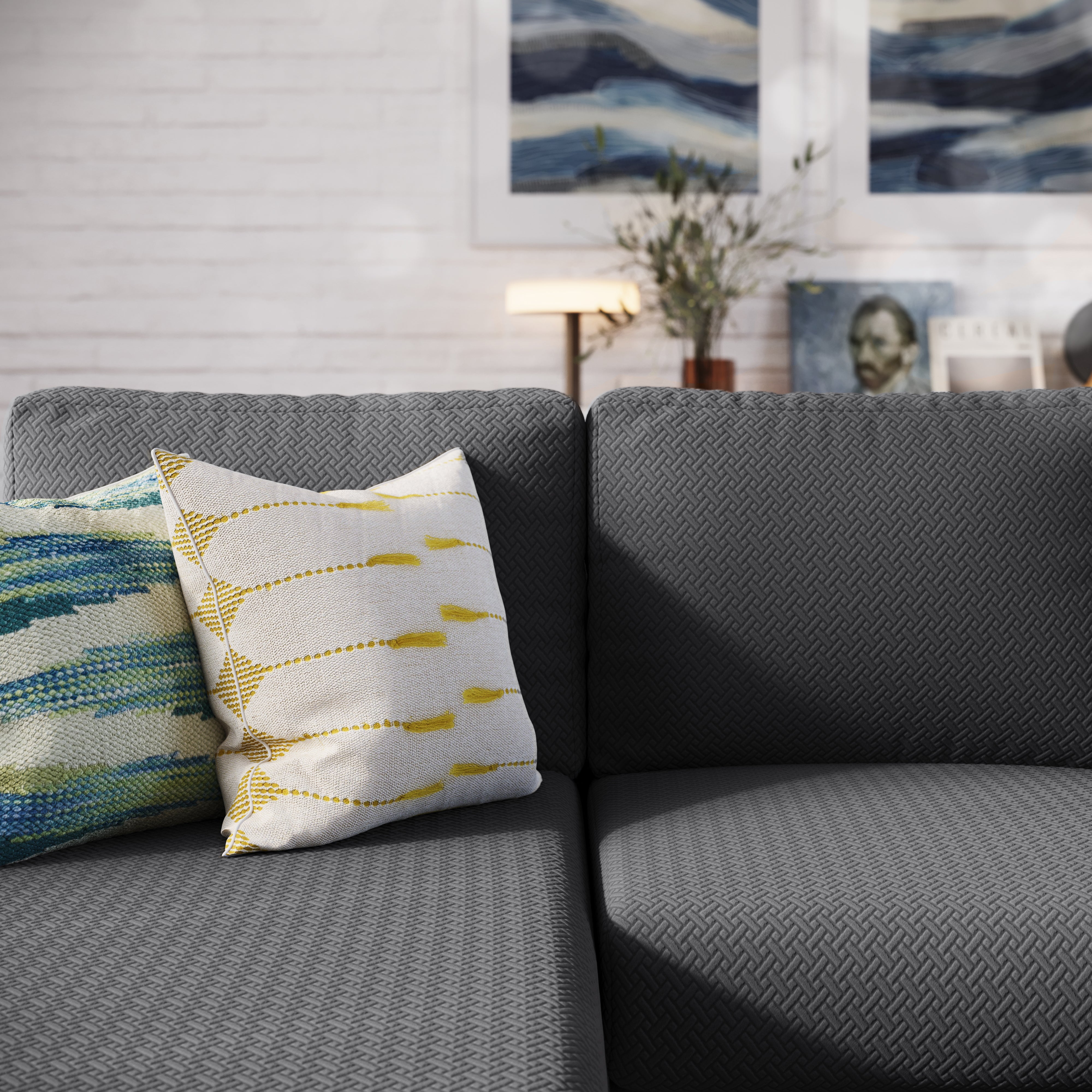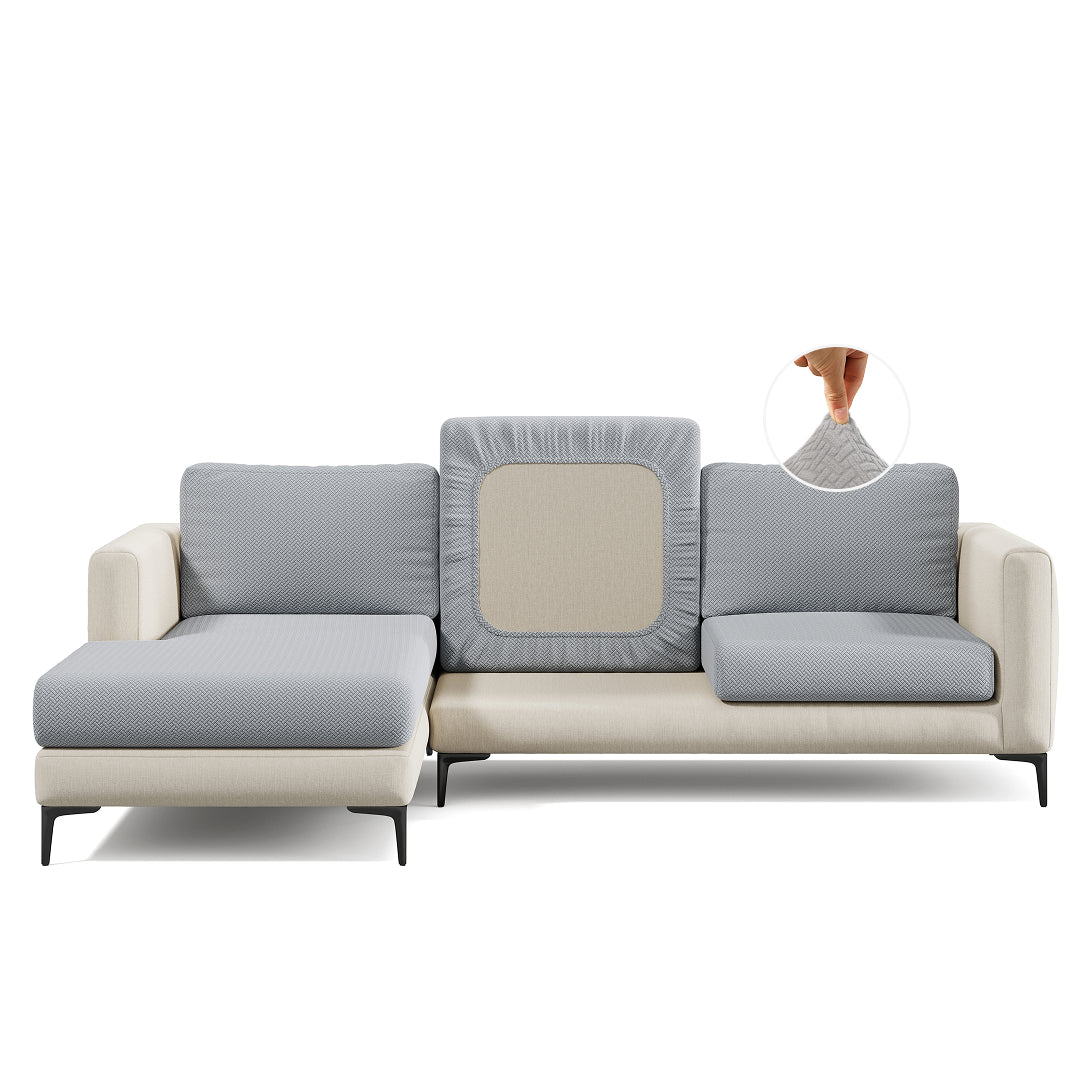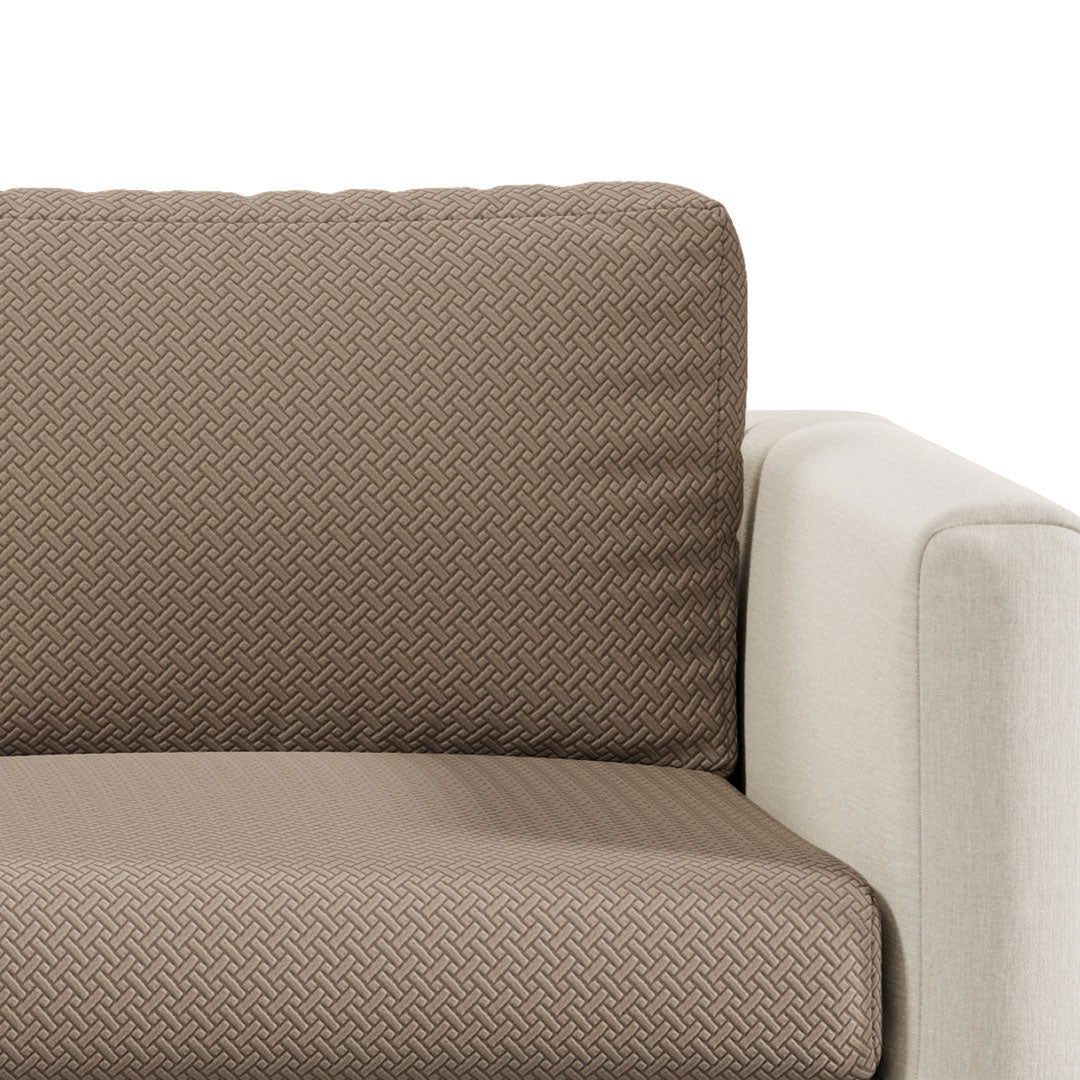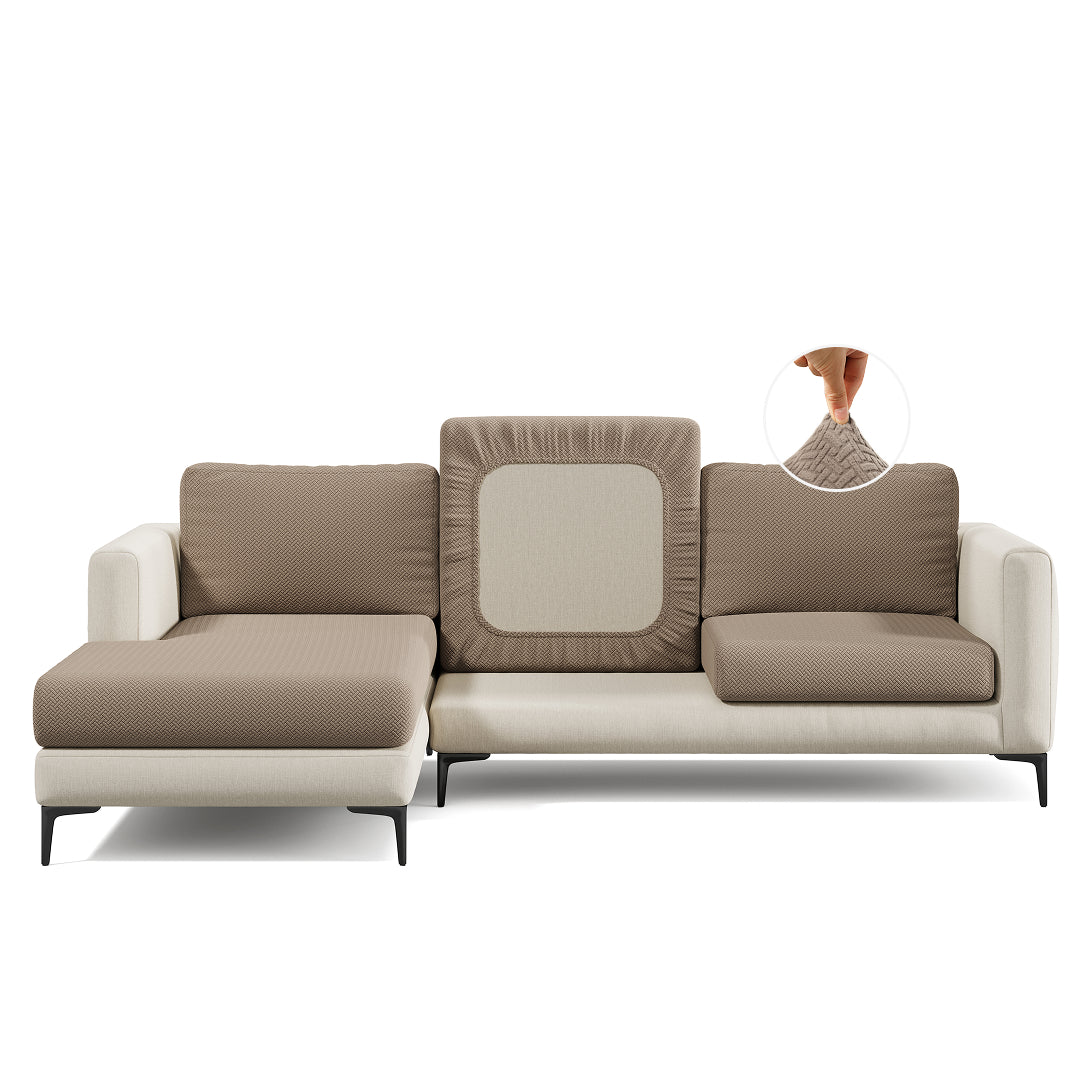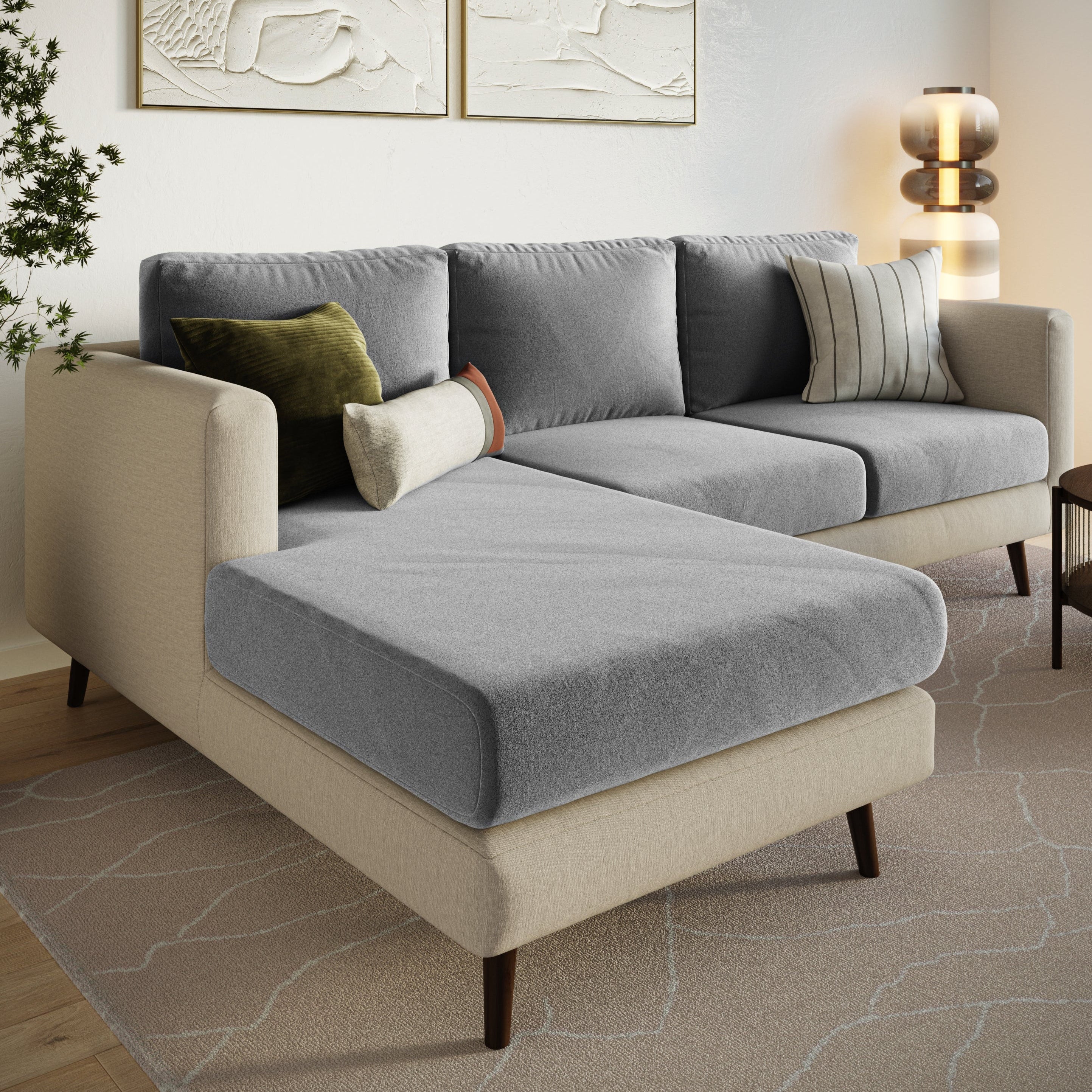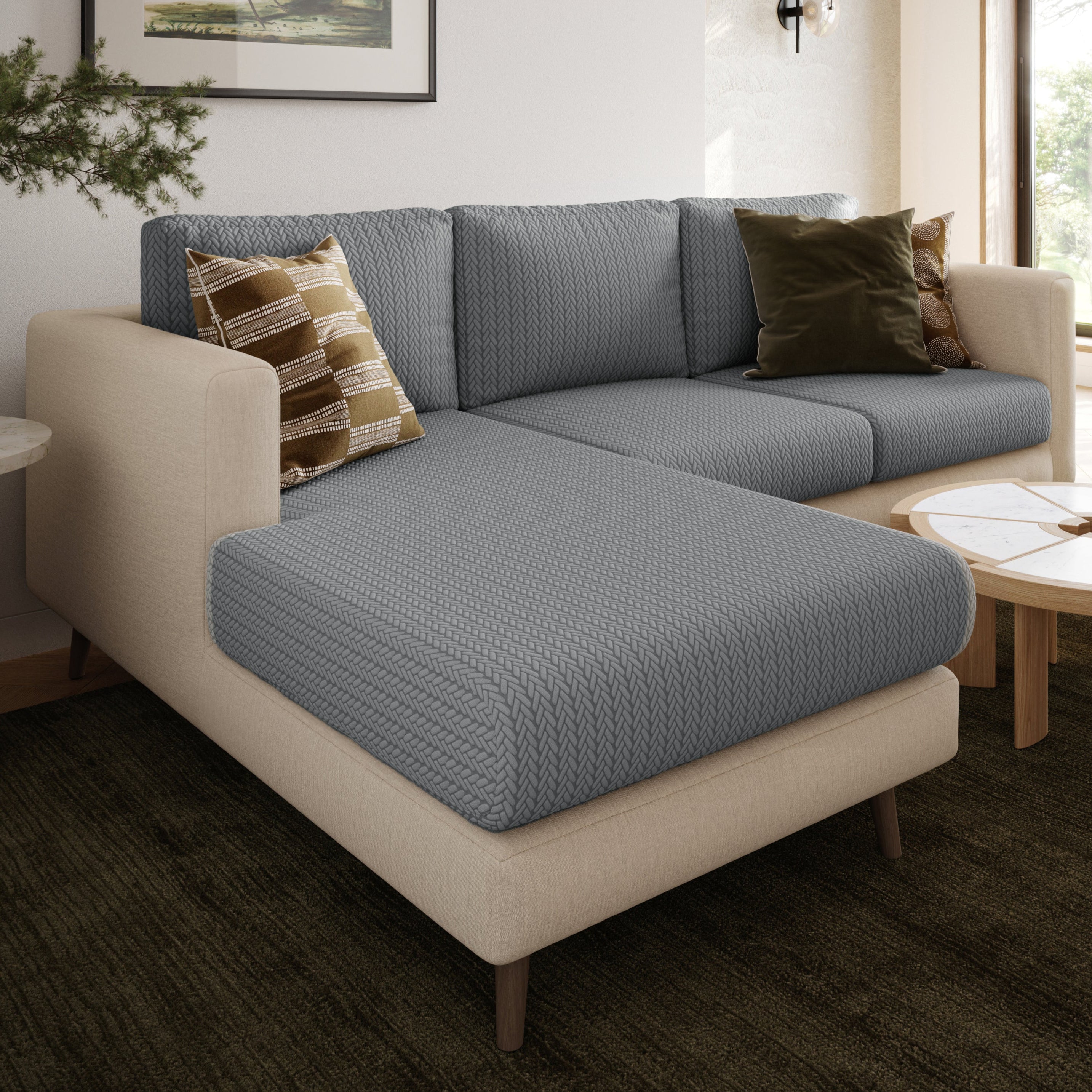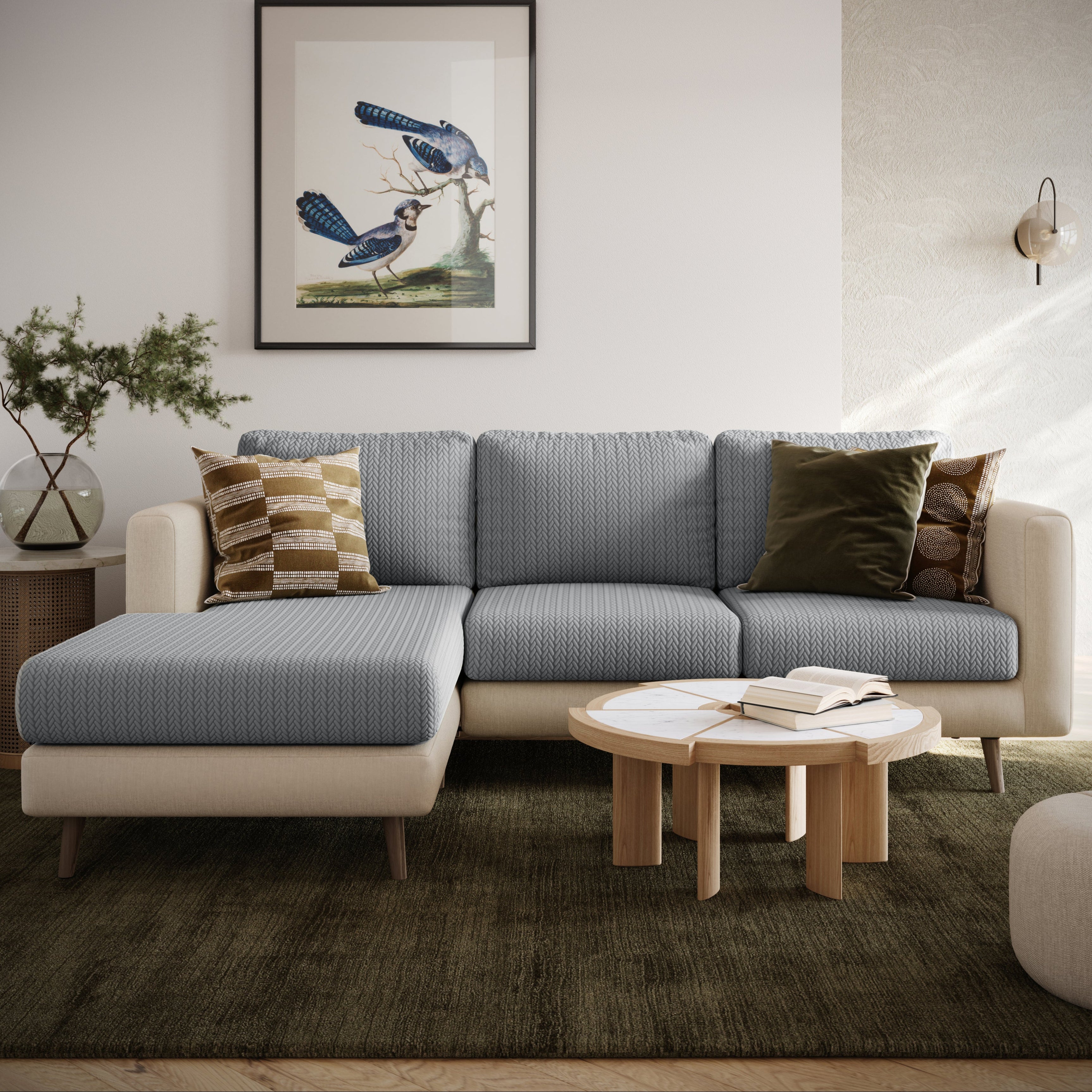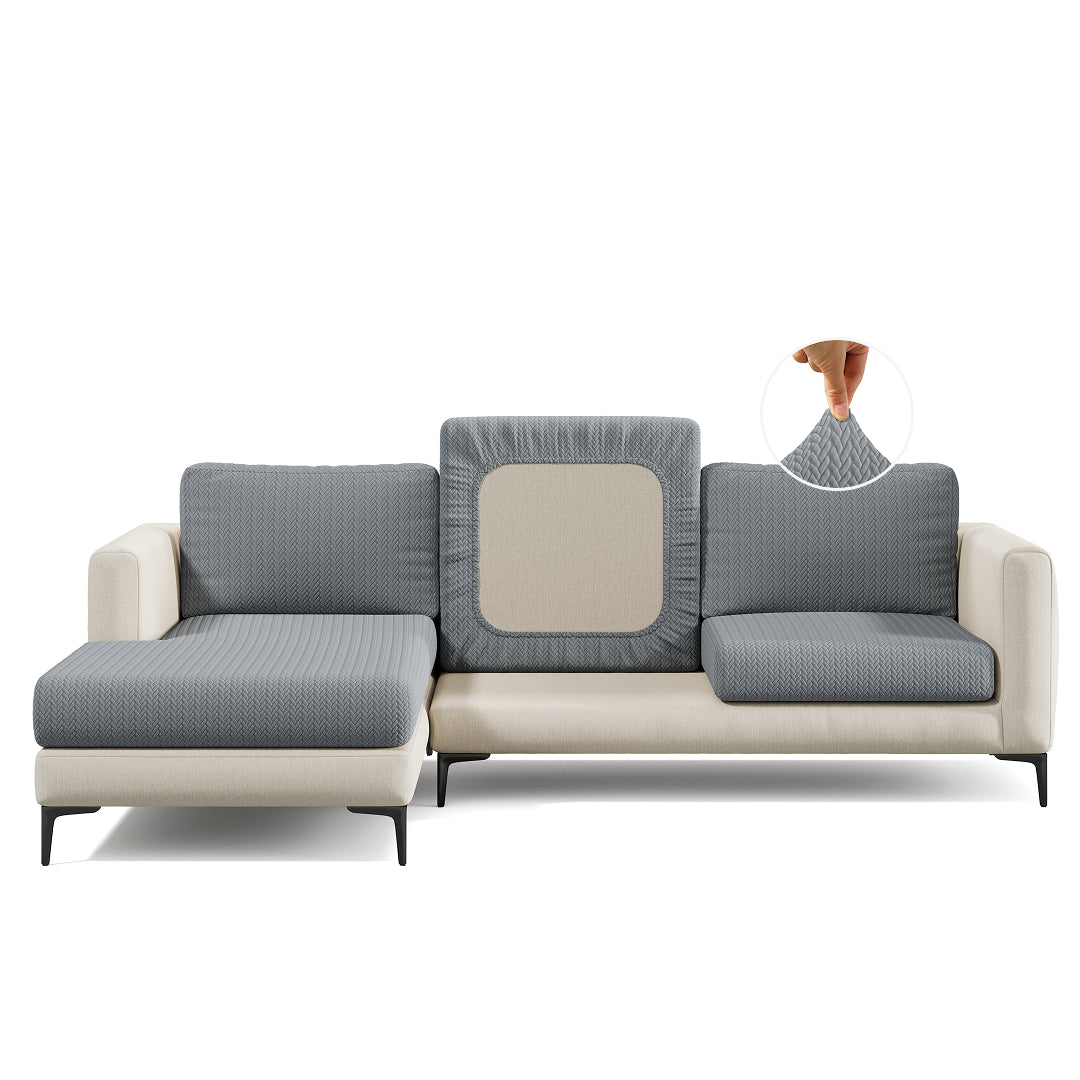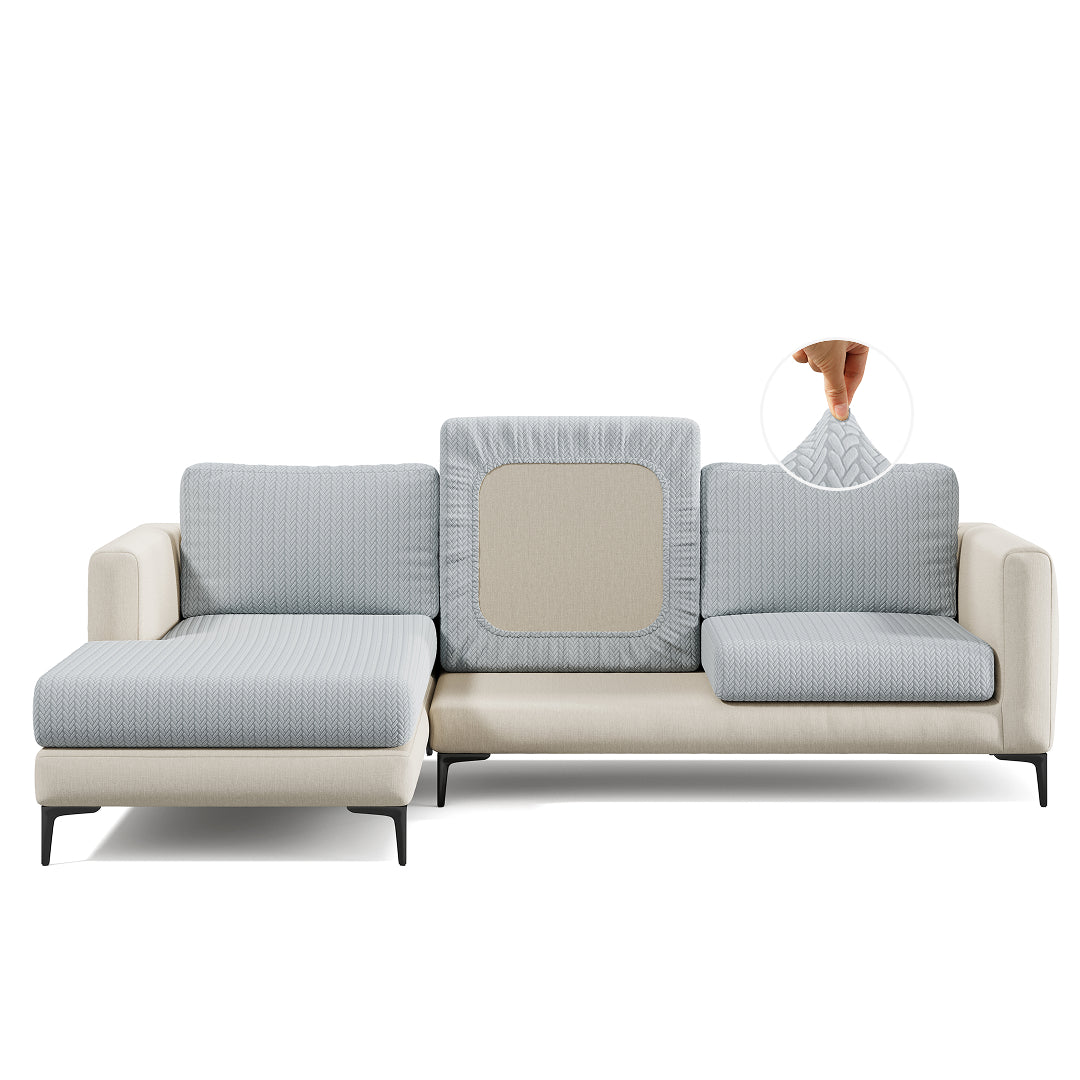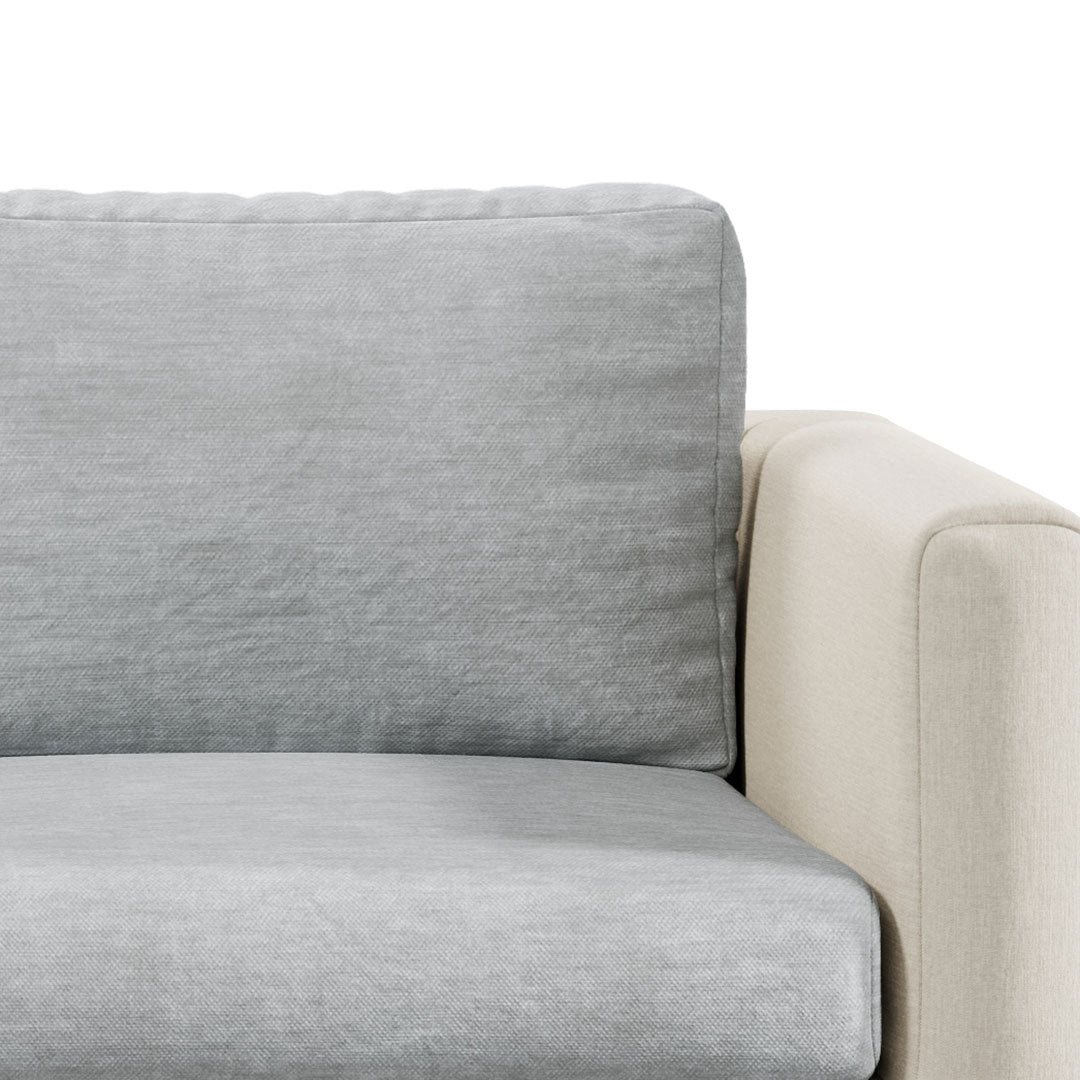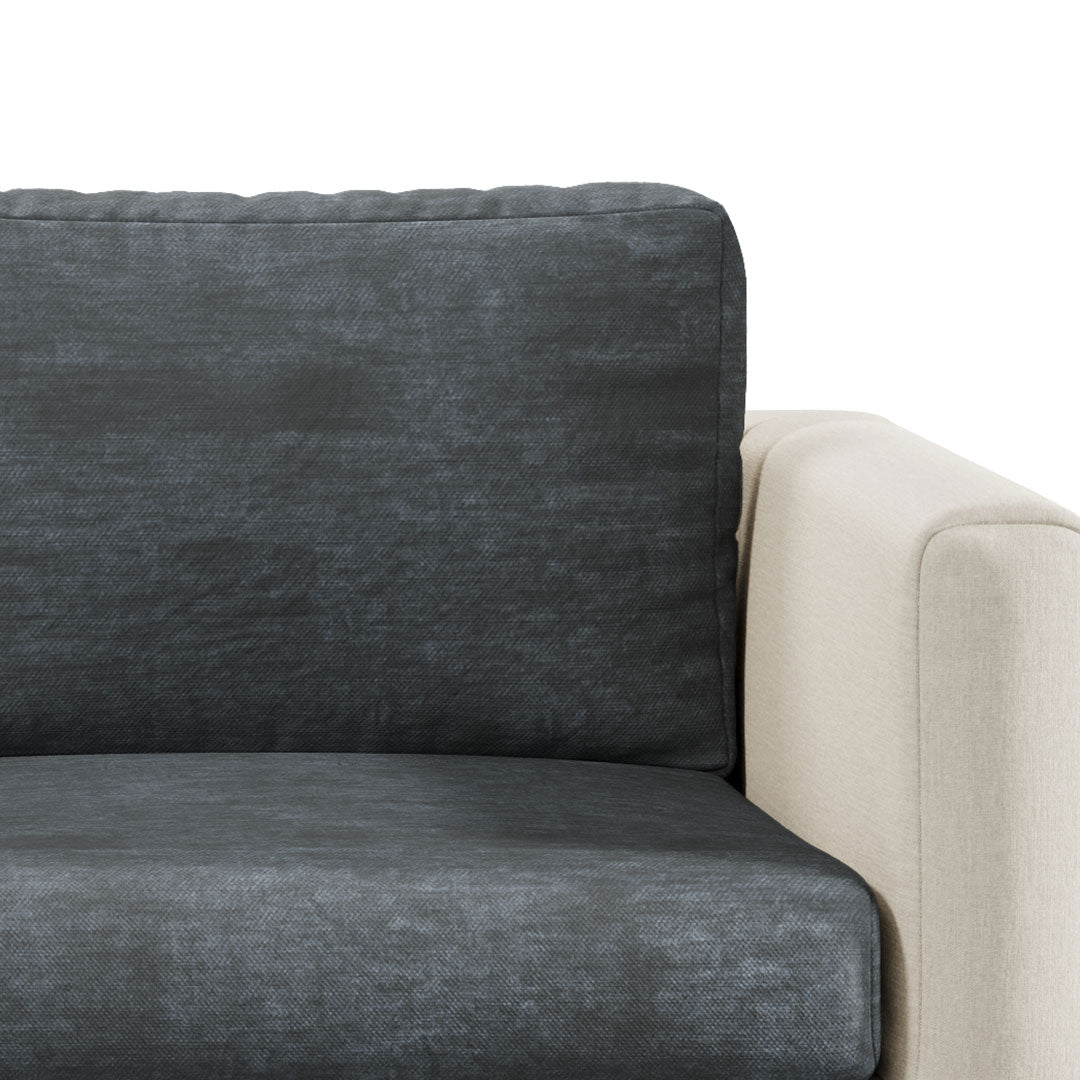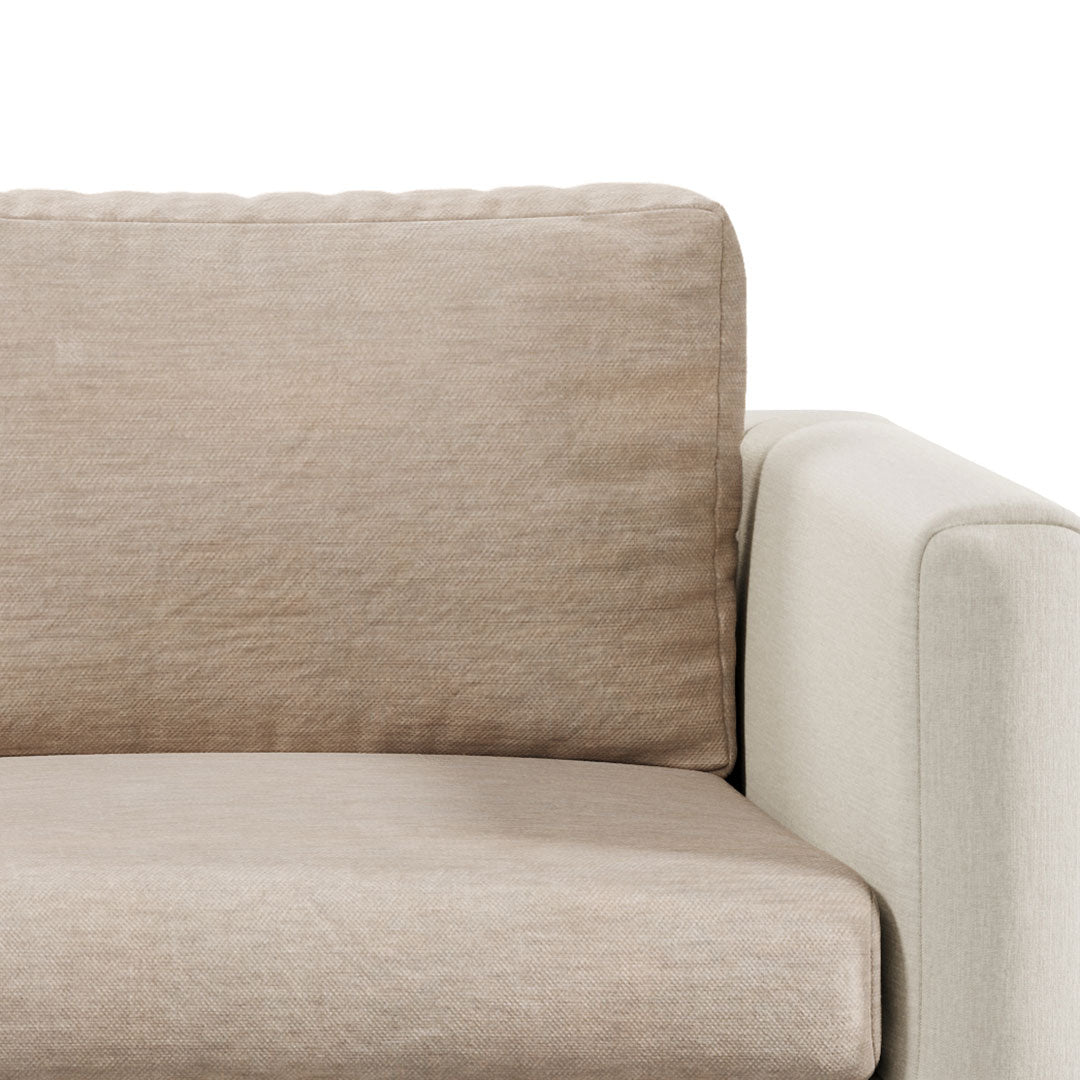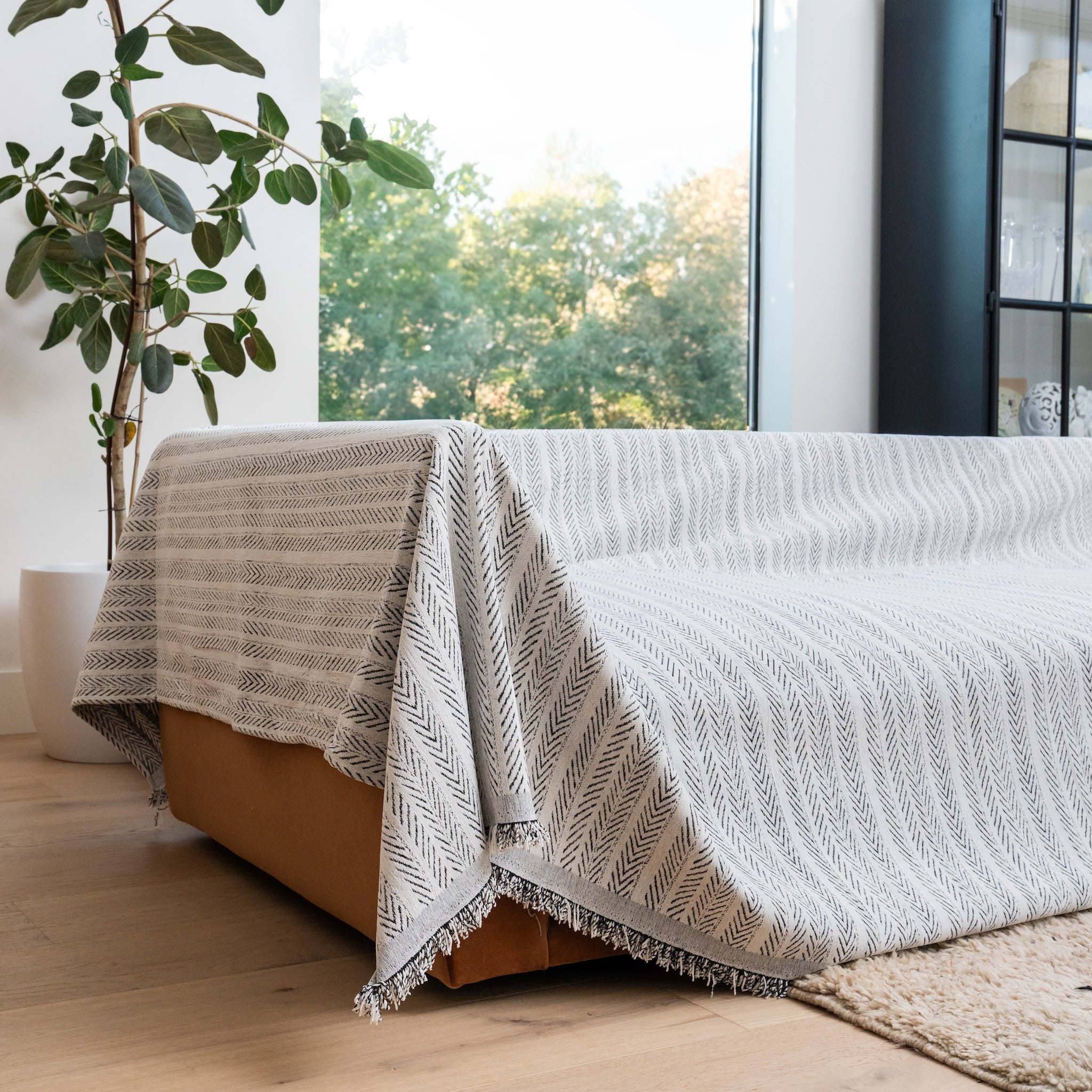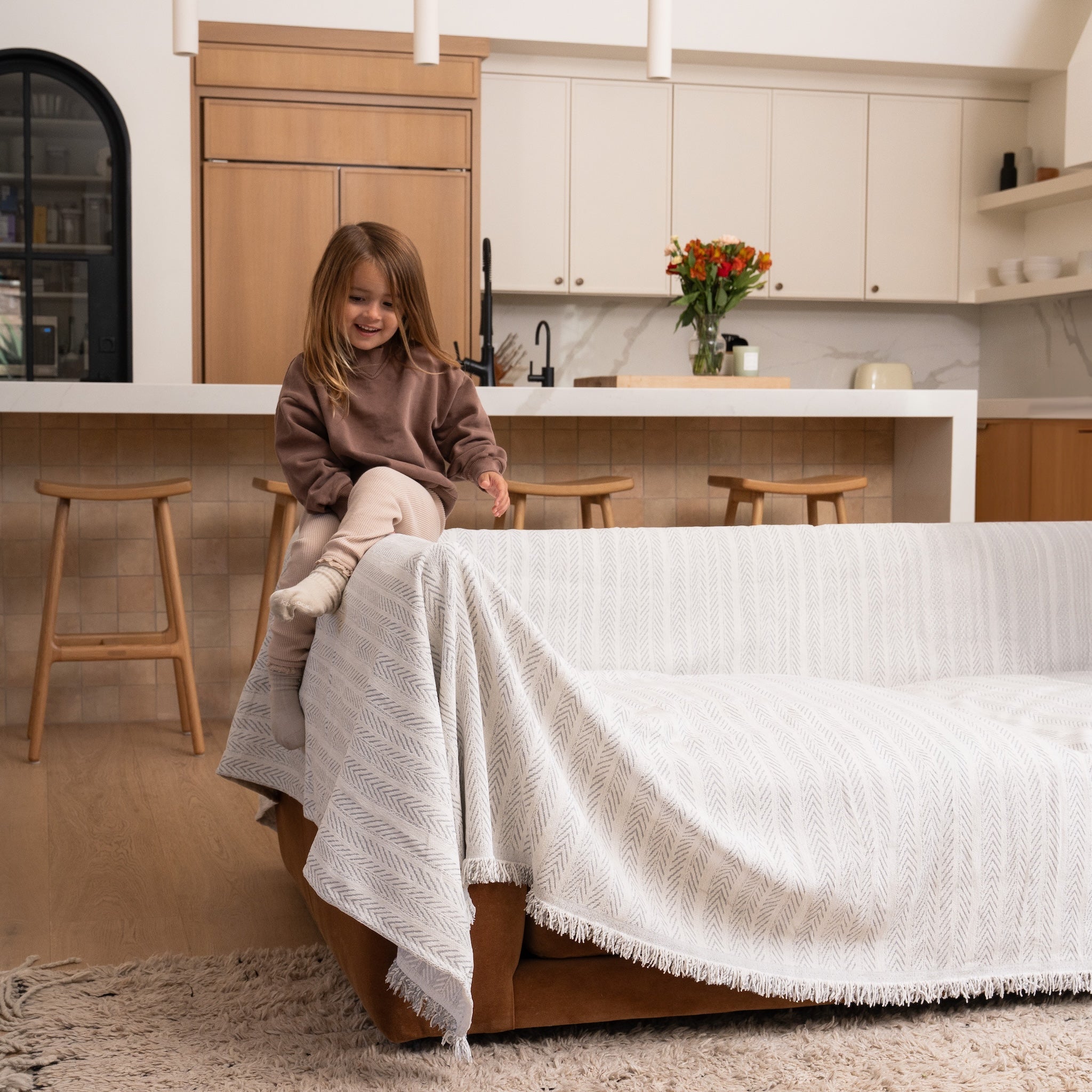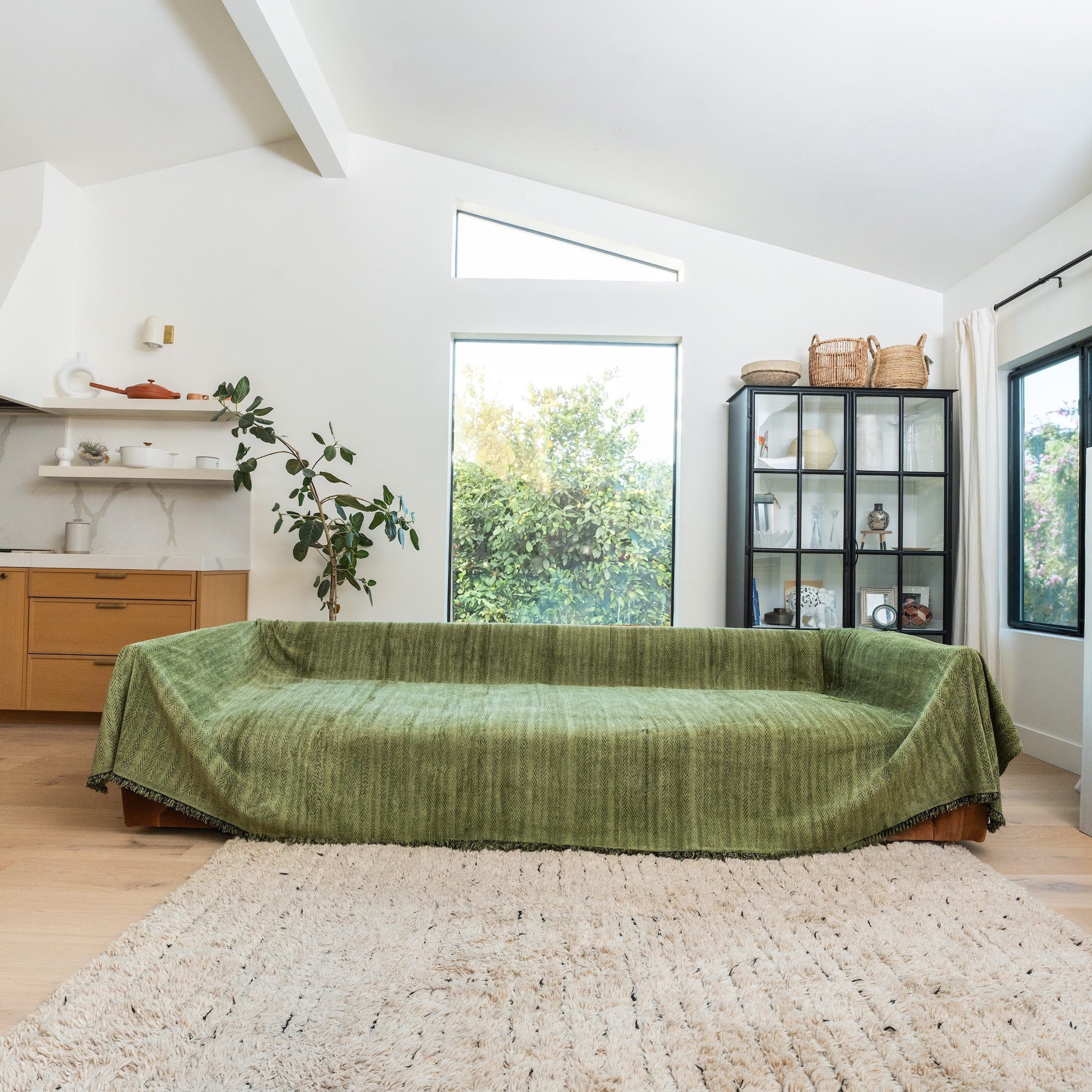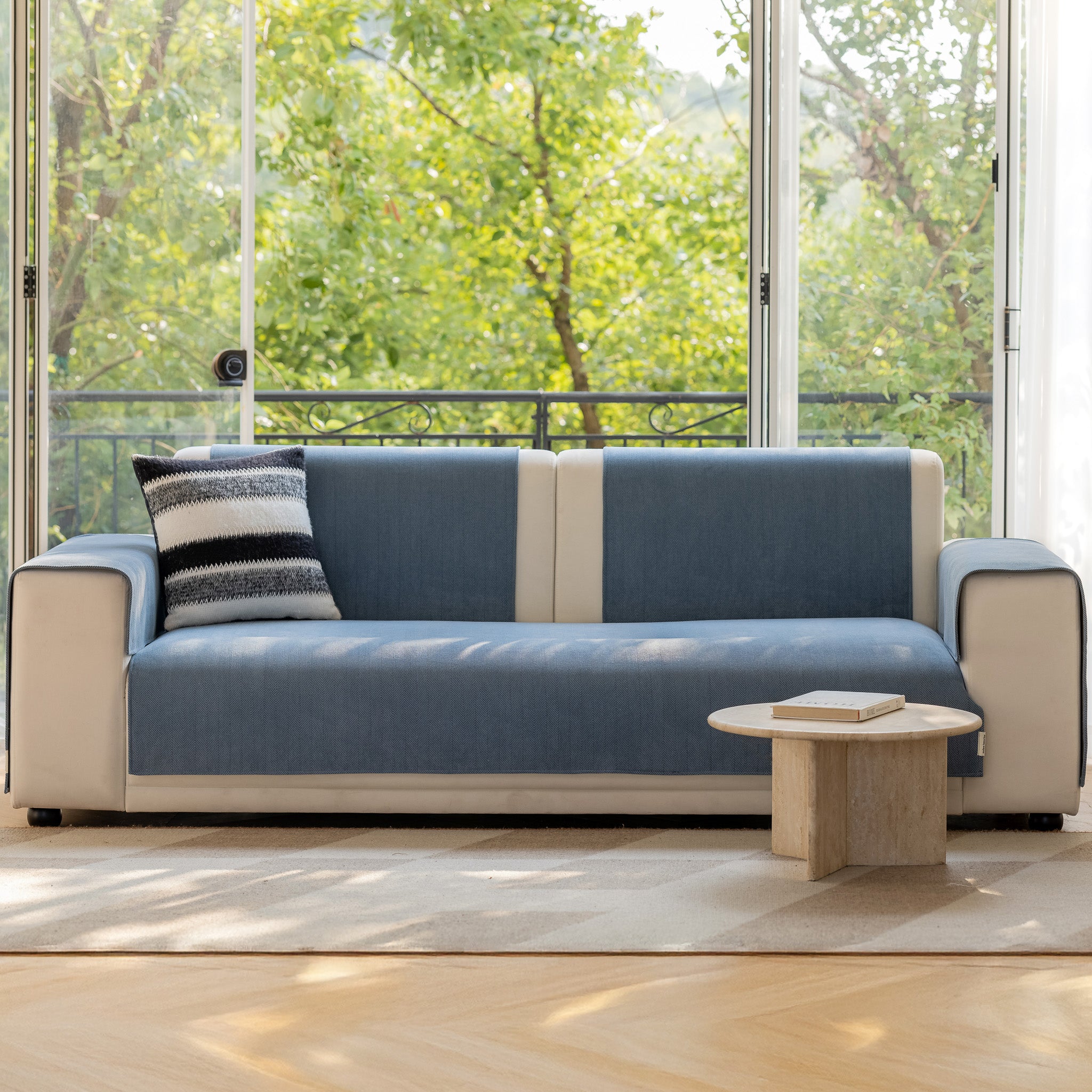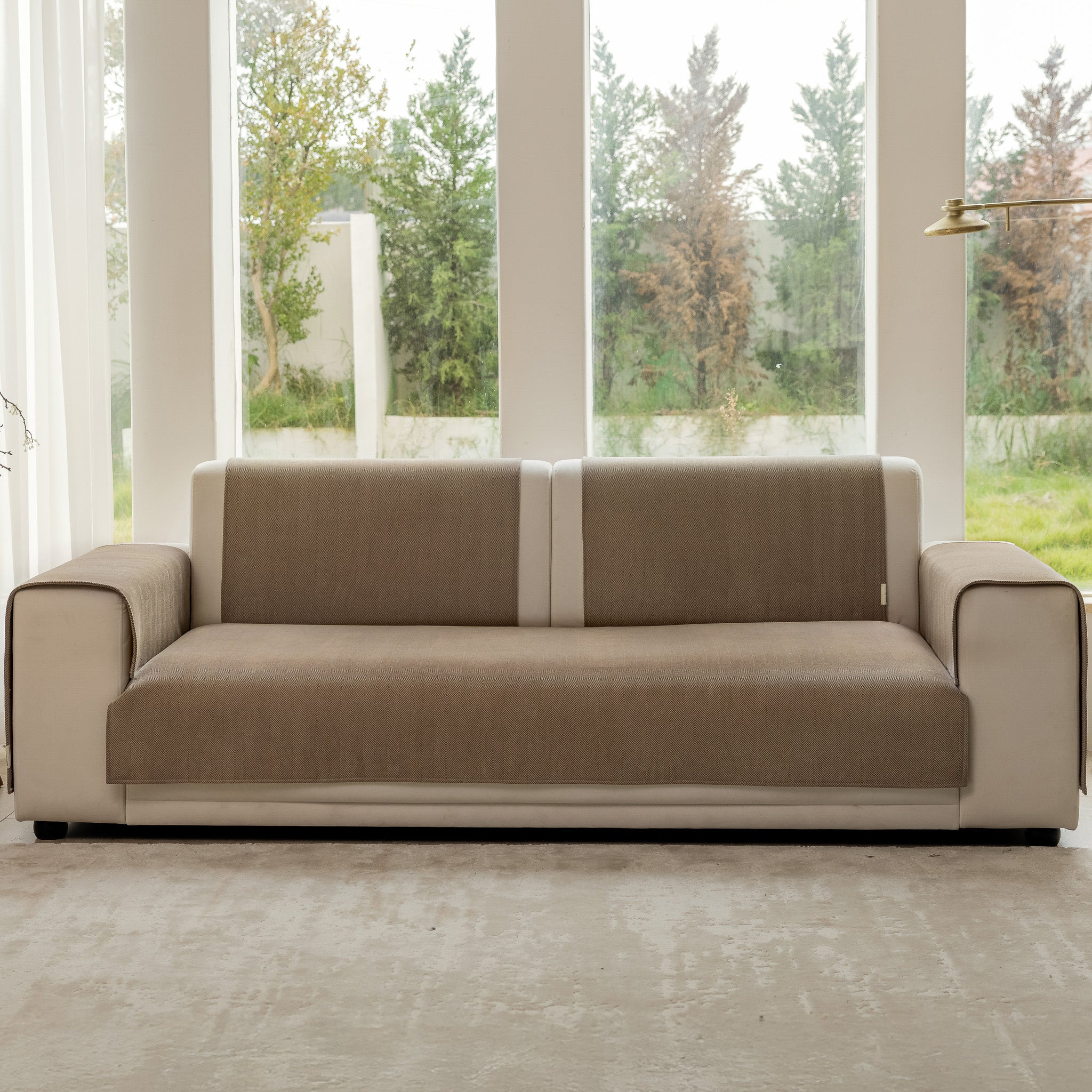The Quick Answer
Faced with a sudden stain on your couch? Reach for the baking soda in your kitchen as your first line of defense.
Here's one way to quickly remove stains from your couch:
- Blot the Problem Area. Use a dry cloth to dab the stain gently and absorb any excess liquid. Be sure to avoid rubbing.
- Apply a Baking Soda Paste. Mix a few tablespoons of baking soda with water to create a thick paste. Smear this solution over the stain and wait for 10 minutes.
- Vacuum. Once dry, gently brush off the residue and vacuum the area.
- Assess and Repeat. If the stain lightens but persists, consider a second round.
This quick response can halt the stain in its tracks, buying you time to explore more specific or intensive cleaning methods, if they’re even necessary. Keep reading to learn about some other fixes that might be best for your couch.
Understanding Your Couch Material
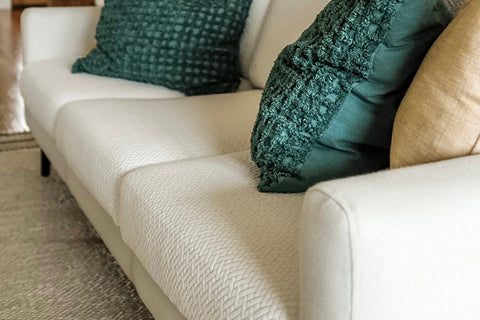
Why Material Matters
The first step in effective stain removal is understanding what your couch can and cannot handle. This involves recognizing the fabric type, as each requires unique care. Applying the wrong method can transform a small blemish into a permanent stain.
Identifying Your Couch's Fabric
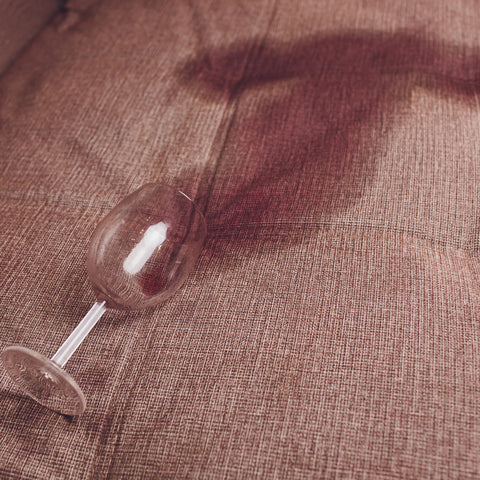
Your couch should have a care tag, often hidden in a seam, showing cleaning dos and don'ts with specific symbols:
- W: Safe for water-based cleaning solutions.
- S: Only solvent-based cleaning agents are appropriate.
- WS: Both water-based and solvent-based options can be employed.
- X: Strictly requires professional cleaning.
These codes guide you toward the right solution and away from potential damage. If the tag is missing, try contacting the manufacturer or conducting cautious spot tests on hidden sections.
Commercial Upholstery Cleaners
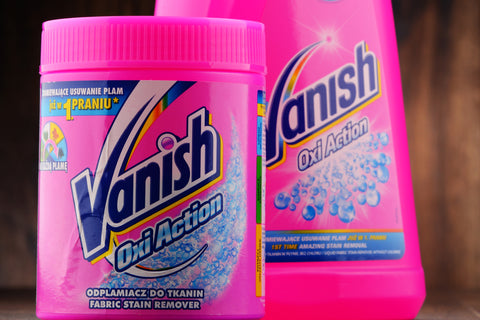
Selecting the Right Product
Finding the right commercial upholstery cleaner can seem daunting. The secret lies in aligning the cleaner with your couch's material and the nature of the stain. Whether you're dealing with a wine spill or ink marks, specific cleaners target different types of stains, so reading labels is your best first step. Remember, the most potent cleaner isn't always the best choice — it's about compatibility and precision.
Here are a few commercial cleaners that are known for working well, depending on the type of fabric you have:
- Bissell Spot & Stain Fabric and Upholstery Cleaner
- Woolite Carpet and Upholstery Cleaner
- Scotchgard Fabric & Upholstery Cleaner
- Resolve Upholstery Cleaner & Stain Remover
- Vanish Fabric Stain Remover
Application Process
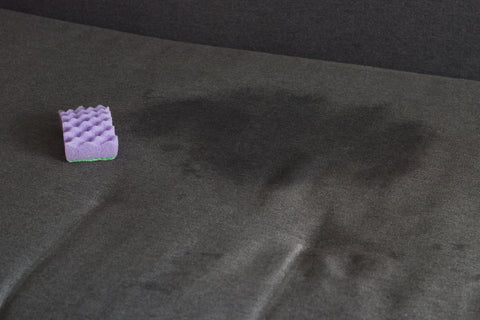
Now, armed with the ideal cleaner, it's time for action. Before applying it, always conduct a spot test on a hidden area — this step can save you from ruining your furniture in case it has a reaction to the cleaner you’re using.
You should follow the specific instructions on the cleaner, but here’s the general process of applying most cleaners:
- Spot Testing: Apply a small amount to a hidden area and wait for the specified time. If there's no adverse reaction, you're good to go.
- Application: Lightly spray or apply the cleaner onto the stain, avoiding saturation, which can cause more harm than good.
- Timing: Let the cleaner sit and absorb the stain. The product label usually specifies the duration.
- Blotting: With a clean, dry cloth, gently blot the area — no rubbing, as it can deepen the stain.
- Rinsing: Some products require rinsing with a damp cloth post-application to remove any residue.
Natural Solutions
1. Using Vinegar and Baking Soda
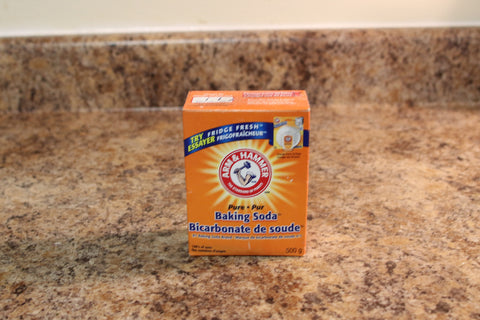
Harness the cleaning power of your pantry staples: vinegar and baking soda. These natural ingredients work wonders due to their acidity and mild abrasiveness.
Recipe for Cleaning Solution:
- Mix two parts of warm water with one part white vinegar in a spray bottle.
- Sprinkle baking soda directly onto the stain.
How to Apply and Clean:
- First, spray the vinegar solution on the stain.
- Allow the solution to sit for a few minutes before adding baking soda. As it interacts with the vinegar, it will begin to fizz, lifting the stain from the fabric.
- Once the fizzing stops, use a brush or cloth to gently scrub the area, and then blot dry with a towel.
- Vacuum the residue once the area is dry.
2. Essential Oils
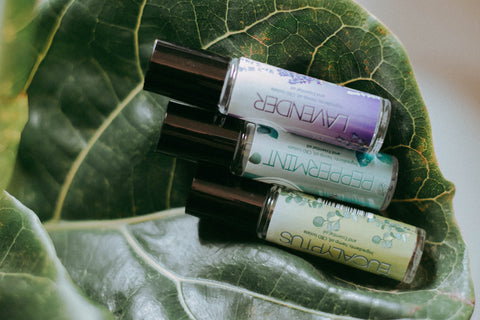
Essential oils, beyond their aromatic properties, have cleaning benefits.
Here are some essential oils that work well for cleaning couch stains:
- Lemon
- Tea tree
- Eucalyptus
There are more essential oils that you can use, but these are some of the most common.
Creating a Mixture for Cleaning:
- Add 10-15 drops of your chosen essential oil to the vinegar and water solution created earlier.
- Shake well before each use to ensure the oils are well-distributed.
- Apply as instructed above, enjoying not just a stain-free couch but one that smells good.
Household Remedies
Effective stain removal doesn’t always require a trip to the store. Here’s how common household items can help you get stains out of your couch.
1. Dish Soap and Warm Water
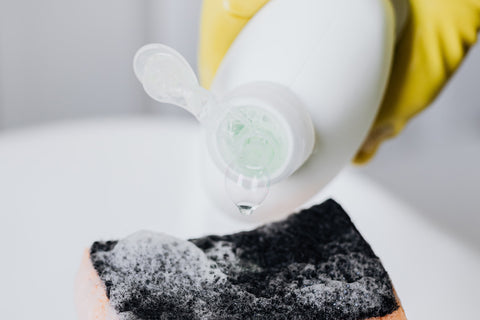
One of the gentlest yet most effective ways to tackle particularly greasy stains is a simple mixture of dish soap and warm water. The soap acts on the grease, breaking it down, while the warm water lifts away the stain.
Preparing and Applying Dish Soap and Warm Water:
- Mix a couple of drops of dish soap in a bowl of warm water.
- Dampen a cloth in the solution and gently blot the stain from the outside in to avoid spreading.
- Rinse the area with a water-dampened cloth and blot dry with a towel.
2. Club Soda
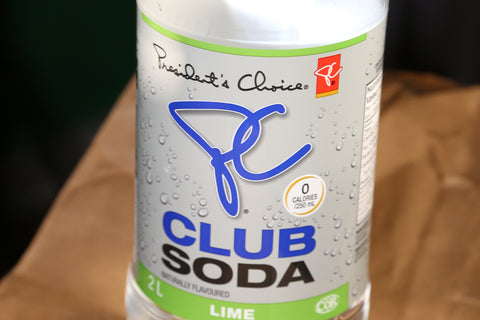
Club soda works wonders, especially on acidic stains like coffee or wine, due to its carbonation and sodium components, which both lift stains and prevent further staining.
Preparing and Applying Club Soda:
- Blot the stain with a dry cloth to absorb any excess liquid.
- Pour club soda directly onto the stain or apply it using a cloth.
- Blot gently from the edges toward the center.
- Repeat the process if necessary until the stain is gone.
3. Hydrogen Peroxide
A common antiseptic, hydrogen peroxide, can also be a potent bleach and stain remover due to its oxidizing properties. However, its strength requires careful handling.
Preparing and Applying Hydrogen Peroxide:
- Dilute hydrogen peroxide (3% solution) with equal parts water.
- Perform a spot test on a hidden area to check for colorfastness.
- If safe, apply the solution to the stain and let it fizz for a few minutes before blotting away.
A few things to keep in mind:
- Never use on dark or colorful fabrics, as it may bleach them.
- Use gloves while handling, as peroxide can be irritant.
Protecting Your Couch
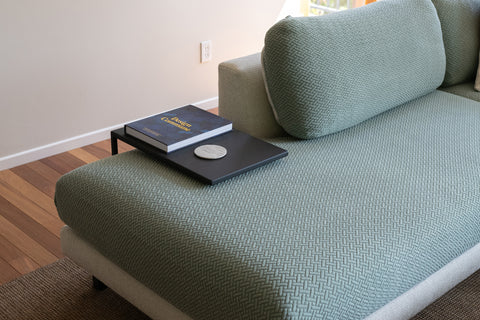
The easiest way to clean your couch stains is to never let them happen in the first place. Investing in preventative solutions like high-quality sofa covers is a game-changer. These covers act as a protective barrier, absorbing spills, and reducing direct contact with the sofa fabric. They're particularly advantageous as they can be easily removed and washed, keeping the couch spotless and hassle-free.
We have a variety of modern sofa covers to choose from. You can determine the right style and color that fits your room and decor best.
Conclusion

Maintaining a clean, inviting couch doesn’t have to be a hassle with these tips at your fingertips. Whether it’s a sudden spill or a stubborn stain, quick actions combined with the right methods can make all the difference. To recap:
- Act Fast: The quicker you address spills, the easier they are to remove.
- Choose Cleaning Method Wisely: Whether it’s commercial cleaners, natural remedies, or common household products, selecting the right solution for your couch is crucial.
- Prevent Proactively: Use sofa covers and routine maintenance to preserve your couch.
By following these steps, you should have no problem going after those stubborn stains. Plus you learned how you can protect your sofa moving forward.

